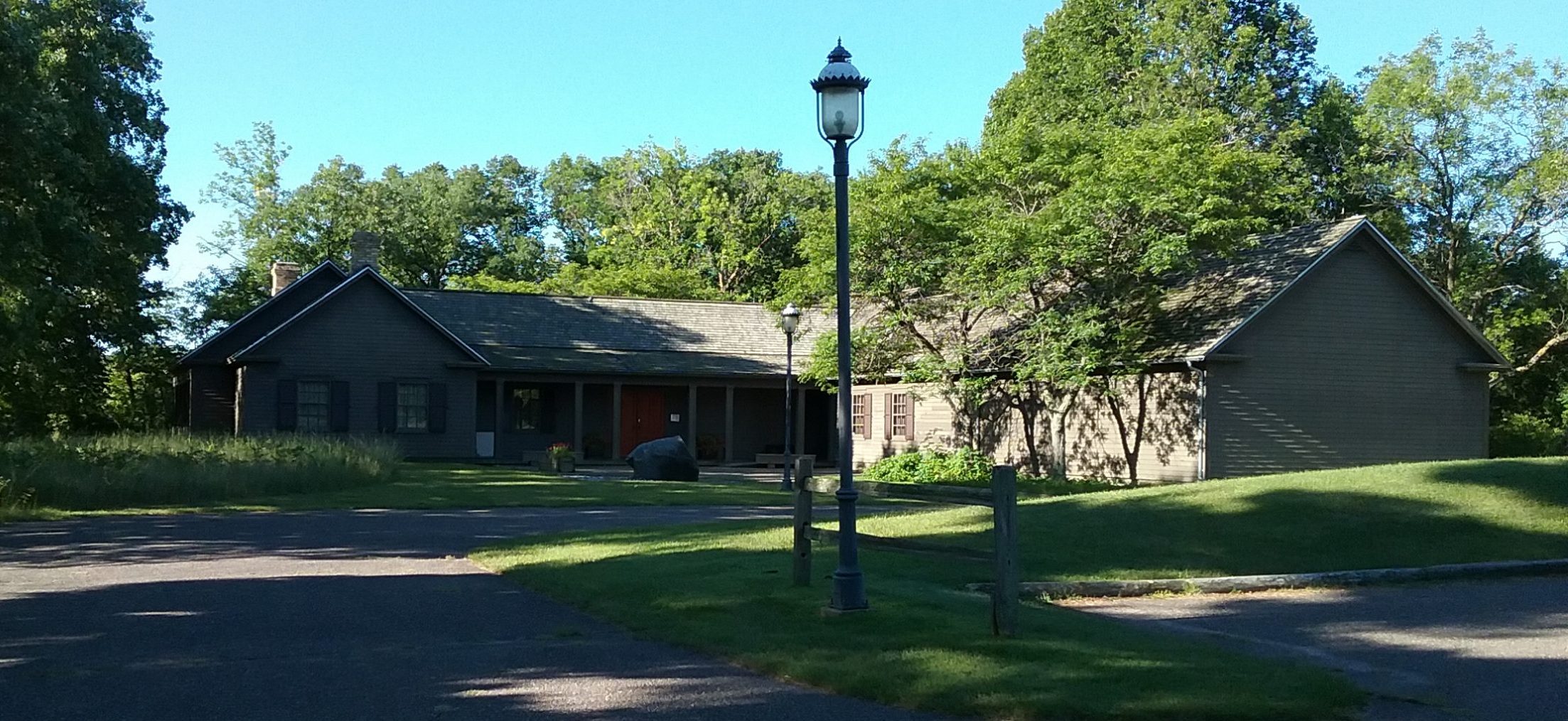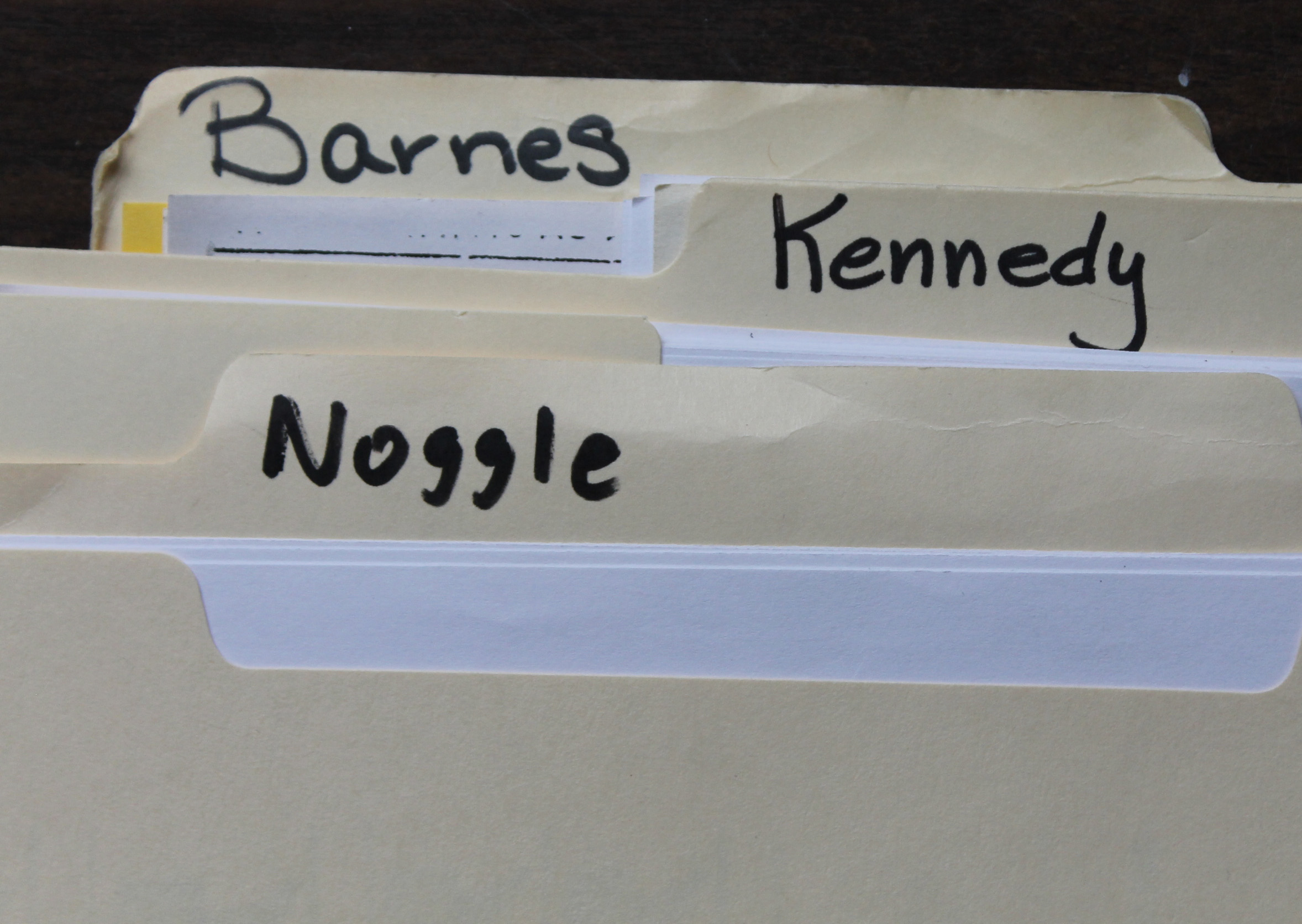Having grown up in a community of less the 1000 people — Walker MN to be precise, in neighboring Cass County — and at times feeling like I was related to almost 1/5 of them, I fully get the small-town phenomenon of when moving to a new community, the inevitable question arises: “So, do you have family in the area?”
In my case, the answer to that question after I moved to this area in 2018 was: “Kind of…”
When I was young, my mother would occasionally mention that we had family “buried in Little Falls”. Alas, I was young, and that type of information did not register and really mean much.
Flash forward a few years and I found myself working in the museum world – I spent nearly 26 years at the Cokato Museum & Historical Society before joining the staff of MCHS – helping countless people engage in genealogy work.
One day, I decided it was my own turn.
Those who have engaged in family history research know the many twists and turns it can entail. My own parents only had a combined three siblings, but their extended families covered a lot of territory. That led to many research locations not just in Minnesota, but other states like Iowa, Illinois, North Dakota, and Washington.
Eventually, a branch of the journey led me here, to Morrison County.
In September 2007, I strolled into the Weyerhaeuser Museum and said to former director Jan Warner, who was a valued colleague, “Hey Jan, I’m here to do some family history research.” Her response: “Here? You have family from here?”
Sure did.
With the assistance of Jan, Mary, and Ann Marie, many blanks were filled in, and – as is so often the case in genealogy work – opened up other avenues of searching.
I’ll spare you the minutiae, but one result was being able to locate the obituaries of my maternal great-grandparents, Angus George and Mary Catherine (McDougall) Kennedy.
After emigrating from Ireland to Nova Scotia, Angus and Mary, along with two of Angus’s siblings and their growing families, packed up and headed to America, eventually settling in Brockway Township, Stearns County.
It was not long before once again they were all were on the move. In Angus’s case, following the lumber camps and railroads across the state. At some point in the late 19th century, Angus and Mary ended up in Randall, where he worked for the railroad, eventually staying there.

1910 Federal Census, Randall; showing the family of Angus & Mary, next door to their second oldest child, Alexander — more on him later. Notice also the boarder in Angus’s family.
Of the eight children born to the union, at least two of them — their youngest daughters Sara (Sadie) and Anna — stayed around Morrison County.

Little Falls Herald, 15 November 1907.
One sad element I discovered with Anna, who after the tragic death of her first husband in a railroad accident in Winnipeg in September 1909, found herself in dire straits. Widowed with her son, Angus — a name which was used repeatedly in the family — at home, she had little in the way of income. The MCHS probate records tell the story of how she appealed to the county for help and was given $10 a month in assistance.

Morrison County Probate Records, #1967,
A few months later, in November 1917, she was appointed Postmaster for Randall, a position she held until 1932. After re-marrying, Anna moved north to Cass County, near to where many of her other siblings had relocated.

“Randall News”, Little Falls Herald, 16 November 1917.
Another child of Angus and Mary, Katherine (Kate), had quite the tale. Born in Stearns County in 1876, she married Forest Grove Noggle of Royalton in 1898. To them were born two children. At some point – exact date unknown – they were divorced.
Remember those two siblings of Angus that came to Minnesota with him? The brother, Archibald (Archie), also ended up in Little Falls, where he and his wife had a family of their own. One of those children, Josephine (Jessie), became the second wife of Forest in 1931. In other words, his second wife was a first cousin of his first wife.
County probate records tell of quite the scrum following Forest’s death in 1954 regarding the estate settlement between the children from the first marriage and the family of the second spouse – as in their own extended family.
Katherine never re-married, and passed away in October 1961 in Minneapolis.

Royalton Banner, 19 October 1961.
Angus and Mary’s other children went mostly north — to Hubbard, Cass, and Beltrami counties.
Their second oldest, Alexander Andrew — seen in the 1910 census image above — was born in Nova Scotia in 1867 and married Minnie Estella Allen in Brainerd in 1897. They eventually settled not far from Laporte, and later in Walker, where their youngest son, Marion Angus — there’s that name again — was born in October 1910.
I knew Marion simply as “grandpa”. That’s how I fit into this whole tale.
Angus and Mary, along with children Katherine and Joseph are buried in the Calvary Cemetery – earlier known as St Francis Xavier Cemetery, in Little Falls.


Anna and son Angus are buried in Calvary Cemetery on Cooper Avenue in St. Cloud. Angus himself died young, at the age of thirty, while living in the St. Cloud area, making a living as a drummer in a popular local orchestra band. What happened to Angus’s daughter, Kay – who was all of six months old at the time of her father’s death — is not entirely certain, though I still try occasionally to see if anything turns up.
Forest Noggle, second wife Josephine, along with her parents, are buried in St. Mary’s Cemetery on the south side of Little Falls, not far from the airport.
Adding to the files of the MCHS archives for Barnes and Kennedy, and creating a whole new file for Noggle, was part of my work; one that I was more than happy to do. It also makes me wonder if one day, some other person will come in to look at those same names and see mine as a contributor.
When looking back at that original question of: “Do you have family here?” The answer is simple — I sure do.
PS – This is not the entire story of Angus, Mary, Anna, Katherine, et al. It’s just a portion. Like many families, there is much which is known, and much which is not. And that’s the challenge/fun of genealogy – no matter where you find yourself, there’s always more to be discovered.
{A version of this article was originally printed in the Fall 2025 edition of the MCHS newsletter.]


I love your story and I have a passel of Angus’s in my world as well. It is a fine name, all in all!! Mine came from Scotland to Canada and then down to Wisconsin. Lovely and very engagingly written story. thank You!!
Thank you Mary for the compliment on our story. It was definitely fun to write. Glad you enjoyed it 🙂
–Mike Worcester
Executive Director